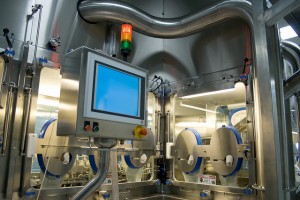Despite the recent surge of job losses driven by a transition out of heavy industrial manufacturing and into hi-tech and higher value-added goods, Australian manufacturing remains the fourth largest employing sector in Australia, employing 936,400 people, or 8.1% of the total workforce.

According to the article on The Australian, a report released on Monday has found that manufacturing can maintain its place as a major employer if it focuses on high-end products where it has competitive edge over its competitors on the global markets.
“Aggregate employment in this industry has been decreasing… and at the same time Australia’s prosperity has increased,” said Sue Beitz, General Manager of the Australian Workforce and Productivity Agency (AWPA) which prepared the report.
“We also know that it is not doom and gloom in every single (manufacturing) sector… we do see that there are fabulous opportunities in the areas of pharmaceutical, biotechnology, food and beverage, either in moving to the higher end of production or entering new markets.”
The AWPA report said Australia needed to increase the skill levels of the manufacturing sector, highlighting that almost half (42%) of the existing workforce do not hold any post-school qualifications. It found that stronger collaboration between manufacturers and universities and raising the skill levels of the workforce, including employing a larger number of universities graduates will be critical to the success of the manufacturing sector.
“Manufacturing plants of the future are more likely to be engaged in research and development, design, production of prototypes and the small scale manufacture of complex, high-value-added goods,” AWPA chairman Philip Bullock said.
“We need a workforce equipped to meet this new paradigm.”
The report predicted that manufacturing will contribute between 5.2% to 6.8% of Australia’s GDP in 2025. It said demand for manufactured goods will grow by between 0.6 to 1.4% a year under most economic scenarios.
However, manufacturing jobs will decline by between 1% to 1.5% a year, as the industry undergoes its hi-tech transition and assembly lines are being replaced by robotics and giant 3D printers.
The report’s release comes at a time of growing speculations that the Abbott Government is preparing to abolish AWPA and merge its functions into the Department of Industry.
“The Abbott Government claims it wants input from industry, yet it is apparently seeking to disband the key national policy and research body on skills, which brings stakeholders together,” opposition industry spokesman Kim Carr said.
The full AWPA report is available here.




















